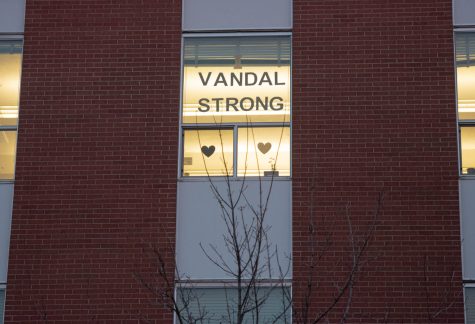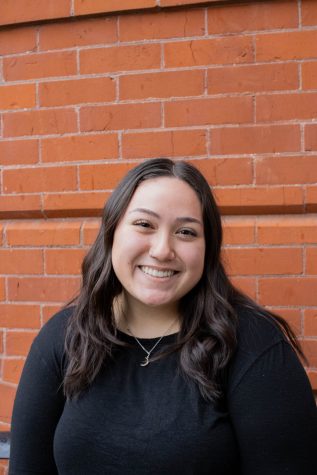EXPLAINER: What to expect in State of Idaho vs. Bryan Kohberger case
Potential change of venue; will not be a quick process
Latah County Courthouse on Jan. 24, 2023.
January 25, 2023
With Bryan Kohberger’s next court appearance scheduled five months from now, experts weigh in on the possibilities of the case and what we can expect as this case unfolds.
David Leroy, Idaho trial lawyer who specializes in criminal felony defense cases, said the prosecution will take the time allotted between now and the preliminary hearing to prepare witnesses and evidence to present at the hearing in order to show two things: that there is probable cause to believe a crime was committed and that there is probable cause to believe that this defendant has committed the crime.
Meanwhile, the defense will be looking at the evidence provided in the arrest affidavit as well as “discovery” provided by the prosecution, which may include police and expert opinion reports, photographs and any other details involving the case, he said.
“I would expect that the defense will be analyzing the details of the police reports, taking a look at the expert opinions and scientific laboratory reports, perhaps hiring their own experts to analyze those for them to prepare for that hearing and for a possible trial,” Leroy said.
Even in simple cases, additional time can be requested and granted to allow for time to go over evidence, he said.
“It’s not uncommon to ask for a delay … it is atypical to set that hearing out for six months, but certainly understandable in this case, with all of the complicated fact patterns and different kinds of scientific evidence that we have that both the defense [and the prosecution] would want to analyze that evidence and prepare for cross-examination,” Leroy said.
Once all evidence is presented at the preliminary hearing, the defendant will either be found by a judge who determines there is enough probable cause or the defendant can waive their right to that hearing, in which case the defendant would then appear before a district judge and enter a plea, he said.
There is a chance of another hearing held between now and the preliminary hearing if the defense or prosecution has a request, but the next significant hearing will be the one held in June, Leroy said.
It is also possible that both the prosecution and defense could ask for a “change of venue.” If granted, this would move the trial to a different Idaho county where there may be less publicity about the case, which would increase the likelihood of having an objective jury, he said.

Latah County Courthouse on Jan. 24, 2023.
When New York Times reporter Nicholas Bogel-Burroughs descended upon Latah County to cover the Moscow homicides with fellow reporter Mike Baker, he was met with a few surprises.
Bogel-Burroughs has had experience covering high-profile crimes and court cases. From the Derek Chauvin to the Kyle Rittenhouse trials, he is familiar with approaching these cases.
“I think it’s been somewhat unique, not without precedent, but somewhat unique to have this very broad gag order,” he said.
The nondissemination order for the Kohberger court case prohibits law enforcement, the prosecuting and defense attorneys as well as the attorneys for the victims and their families from speaking to the public or the media about the investigation.
He said that while every case is different, in his experience he has covered high-profile trials with far less restrictive non-dissemination orders.
“That’s obviously done to protect the fairness of the proceedings, but also from a media perspective, of course, it creates a challenge in trying to learn more about the case,” Bogel-Burroughs said.
He said that reporters just need to learn to abide by the nondissemination order and report on what they can while following it.
Bogel-Burroughs said when Kohberger’s first hearing came around he was concerned because the seating inside the courtroom was first come first serve. He arrived shortly after 5 a.m. and found out the hearing was going to be around 9:30 a.m.
When he arrived in the courtroom, one of the rules was that they can only use pen and paper. Bogel-Burroughs said this rule is more common in federal courthouses than a county court, however, he knows every place is different.
When covering high-profile cases, Bogel-Burroughs keeps in mind the tragedy at the center of them, he said.
“When you have 50 journalists in a room, I think sometimes people can forget how intensely difficult the legal proceedings are for the parties who are actually involved,” Bogel-Burroughs said.
Bogel-Burroughs said The New York Times will be in Moscow covering Kohberger’s June 26 court appearance.




















